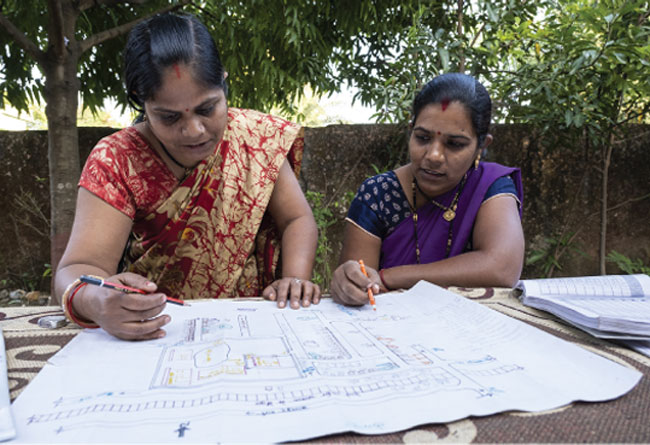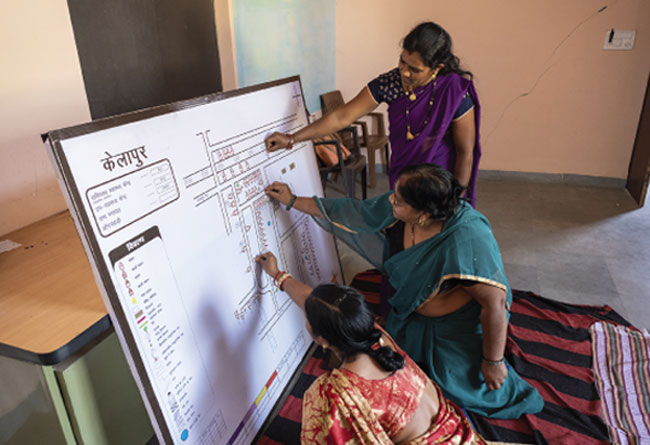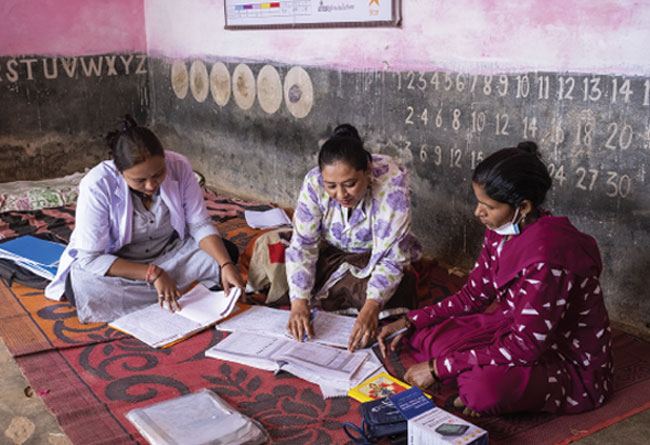

The Accredited Social Health Activist (ASHA), Anganwadi Worker (AWW), and Auxiliary Nurse Midwife (ANM) are the first line of public health service delivery for communities in rural India. They deliver primary health care and nutritional services to pregnant women, mothers and children.




Appointed by the MoHFW (Ministry of Health and Family Welfare), the ASHA acts as the village health mobiliser, facilitating the community in accessing proper health-related services, and the ANM offers vaccination and health services for a Sub-Centre, which is normally a group of 4-5 villages. The AWW, appointed by the Integrated Child Development Scheme (ICDS), is in charge of nutrition and early childhood education and development of the children in the village.
While these frontline workers function in the same areas to attain similar goals for similar beneficiaries, they often don’t collaborate with each other and traditionally work in bureaucratic silos under different government departments. This often leads to many beneficiaries getting missed. We bring these FLWs on a common problem-solving and data platform. This unique design helps them work together to share information, plan activities, identify high-risk beneficiaries, prioritize and deliver timely services.
• In this phase, the AAA workers create a village map, a tool introduced by TAF for easy planning, with the help of the village community.
• They uniformly number the houses on the map, ensuring a common database of the village population among the three of them.
• Further, they mark the houses of different categories of beneficiaries, especially the high-risk ones with different-coloured bindis.
• This map acts as a planning tool, which helps them to get a snapshot view of all the cases they have to handle and plan their activities efficiently.
• Once the village map is created, the AAA regularly updates the bindis during the monthly AAA meeting after every Village Health and Nutrition Day (VHND).
• During this AAA meeting, they review data, plan, learn from each other, and jointly problem-solve the cases that are the highest risk and require maximum attention.
The AAA platform helps the frontline workers in improving data accuracy and consistency across their registers, identifying and prioritizing high-risk beneficiaries and improving the quality of their service delivery through shared learnings.